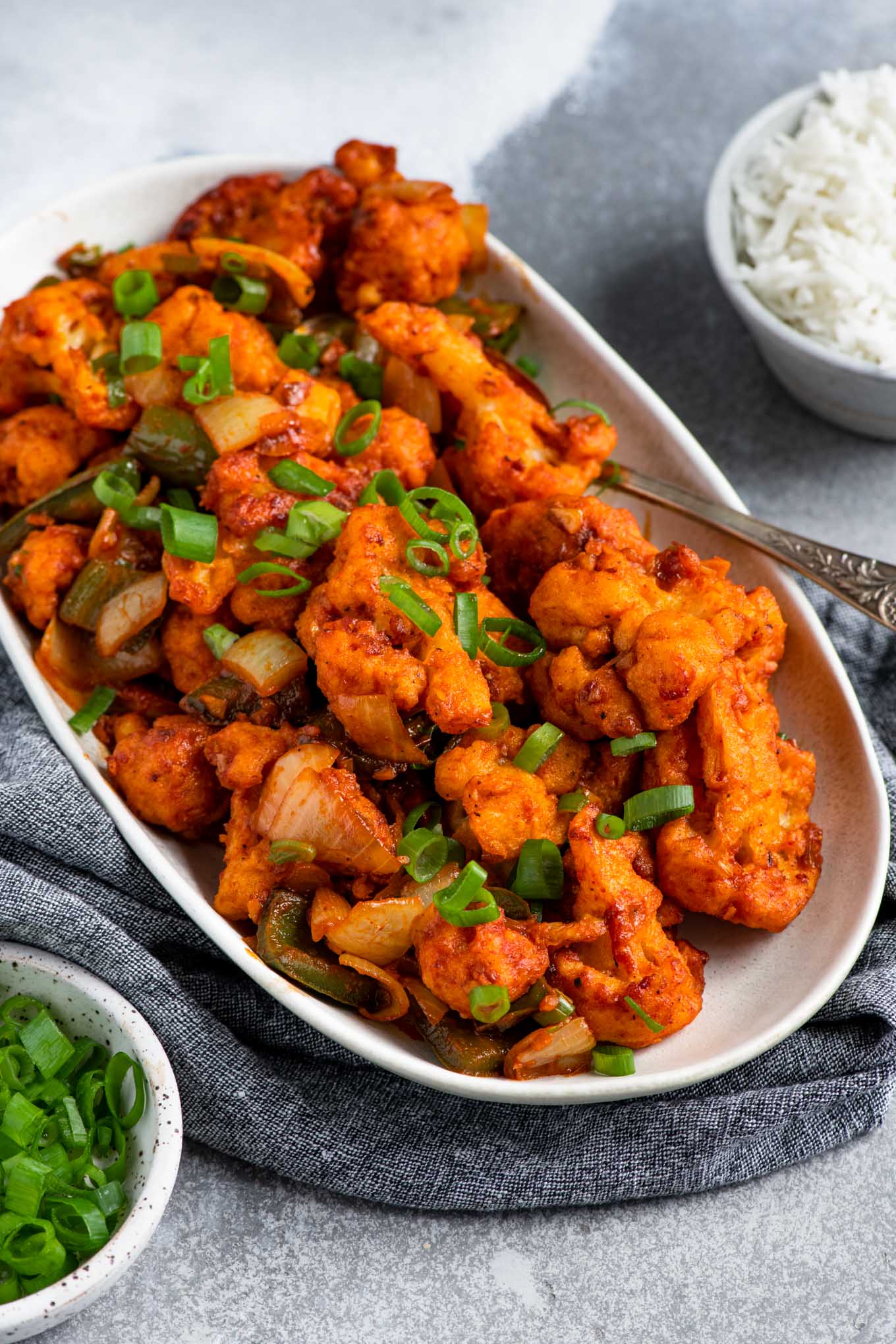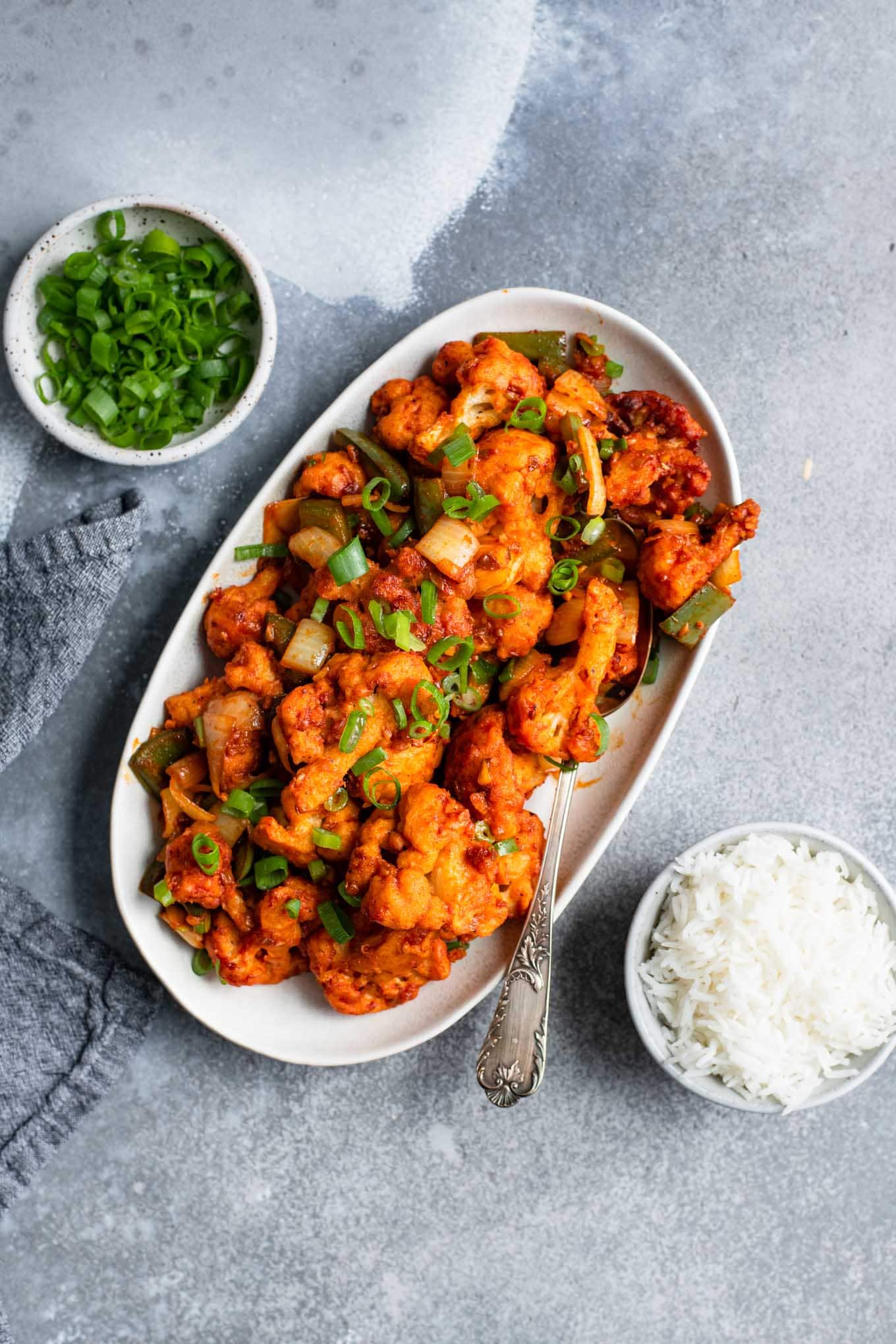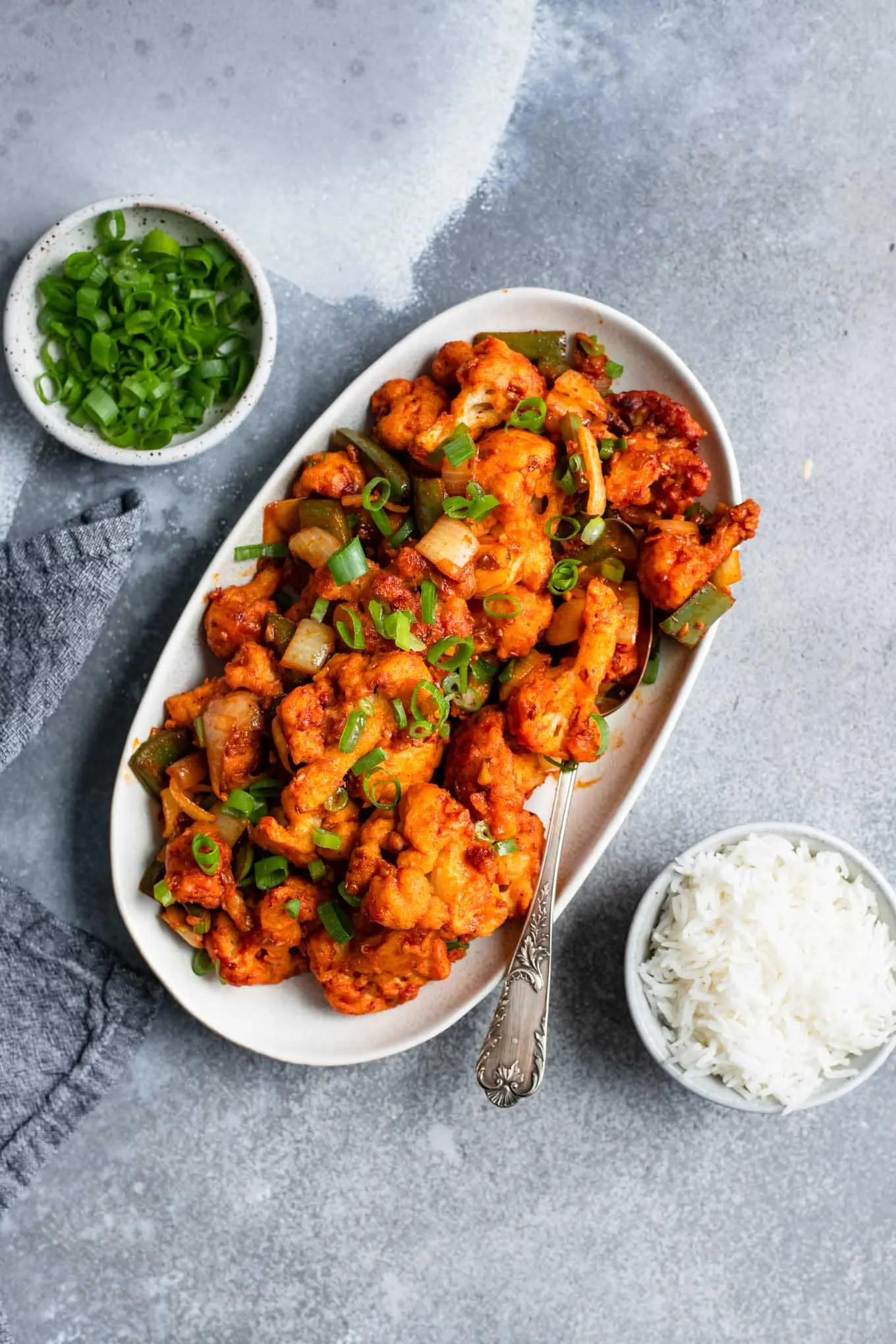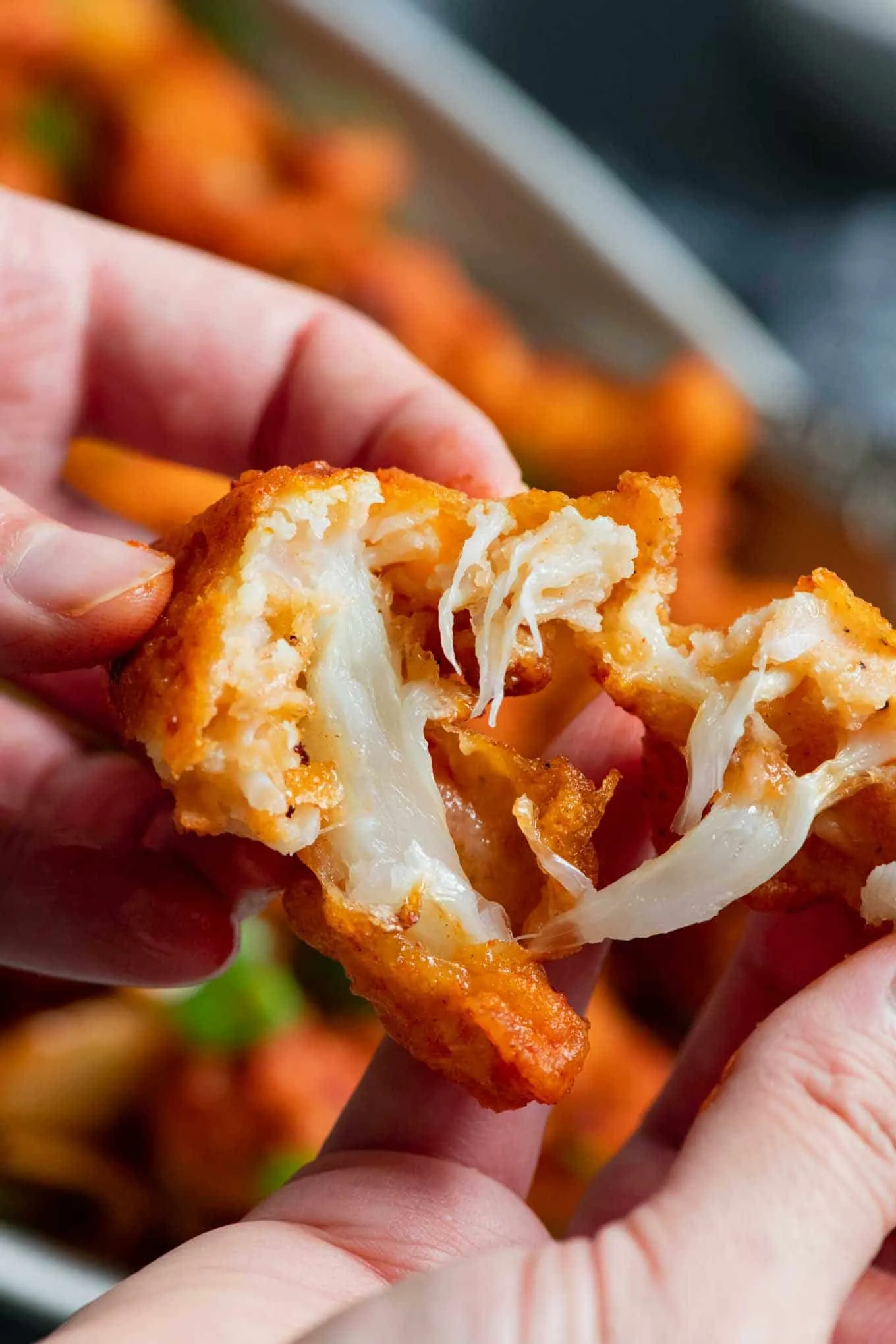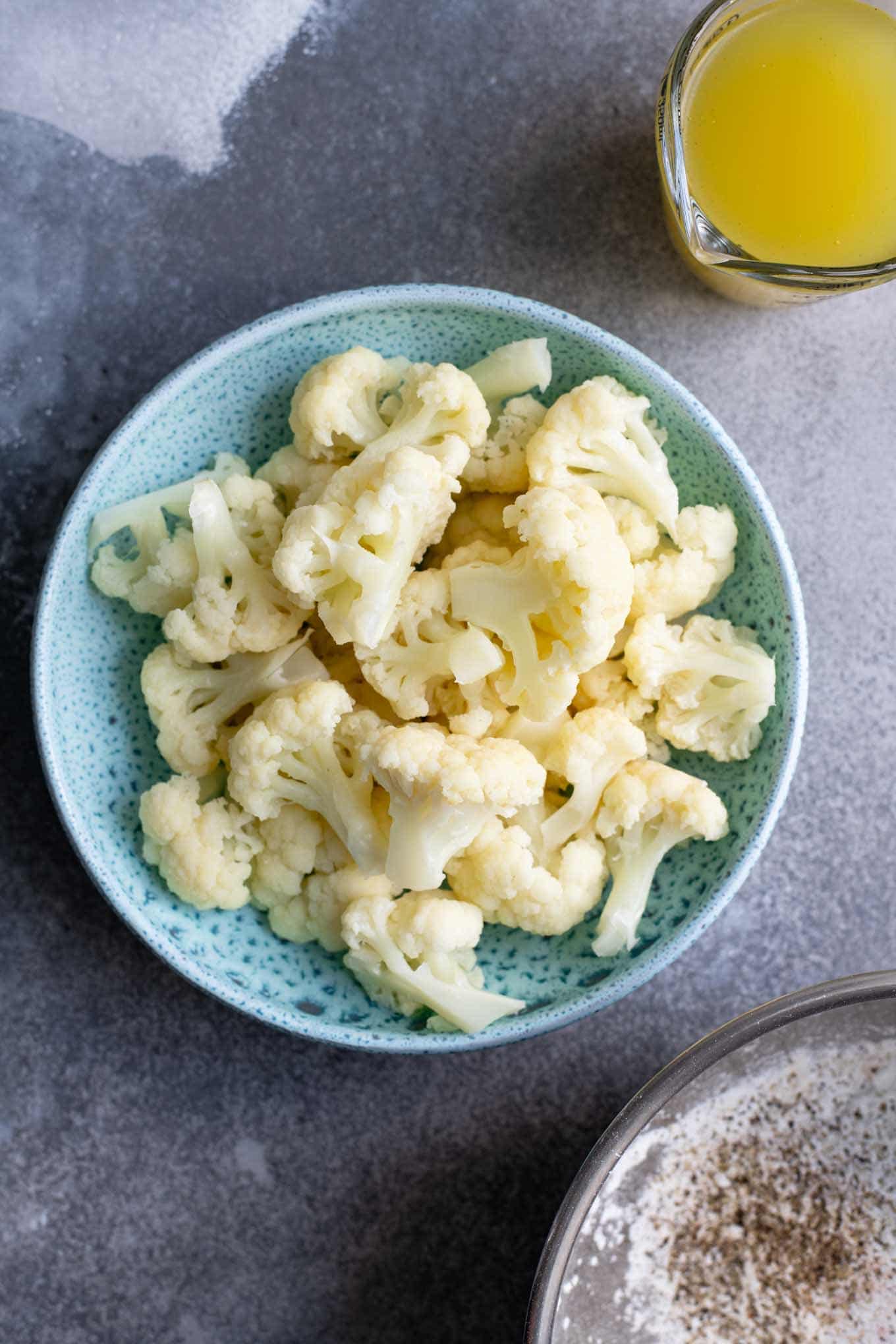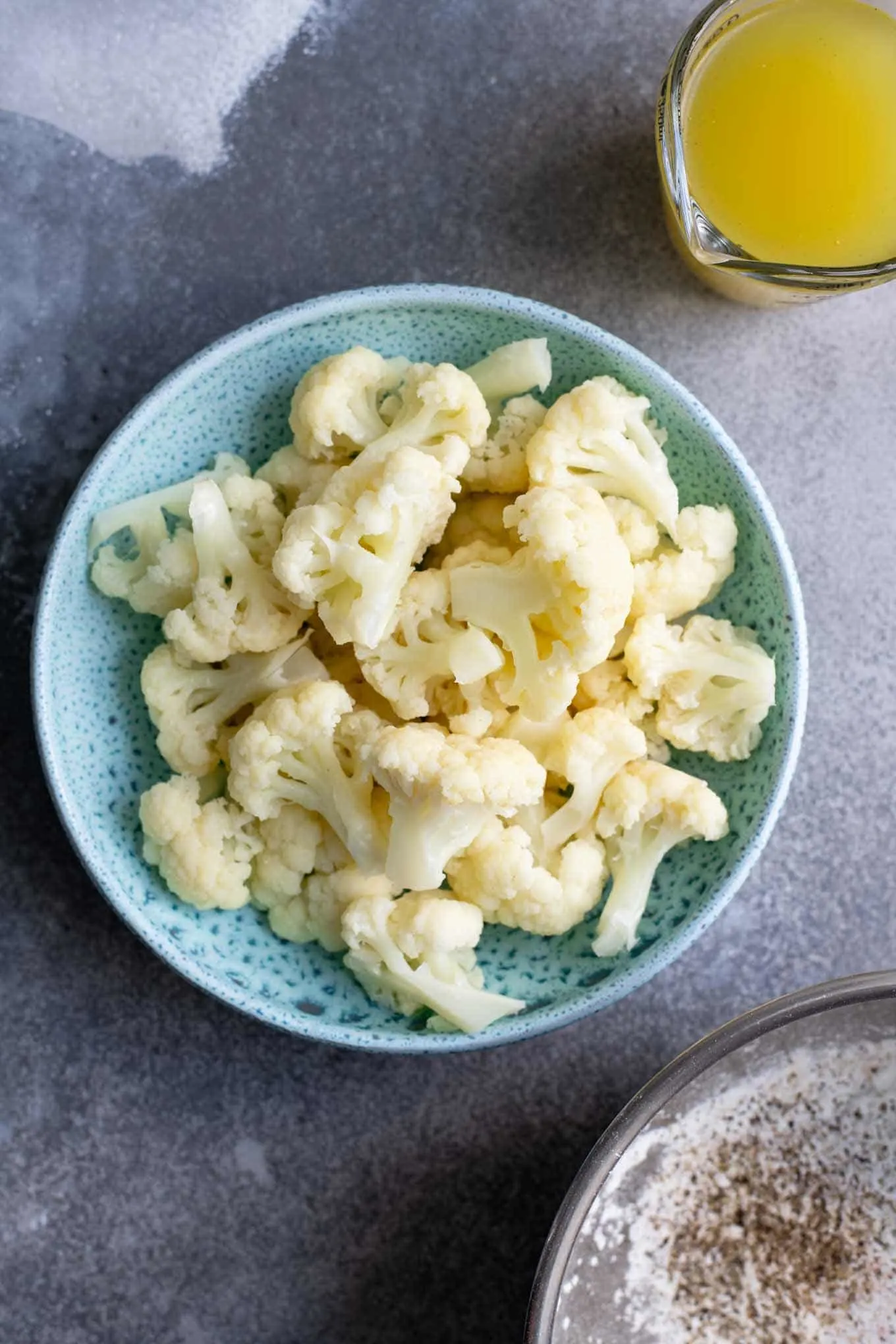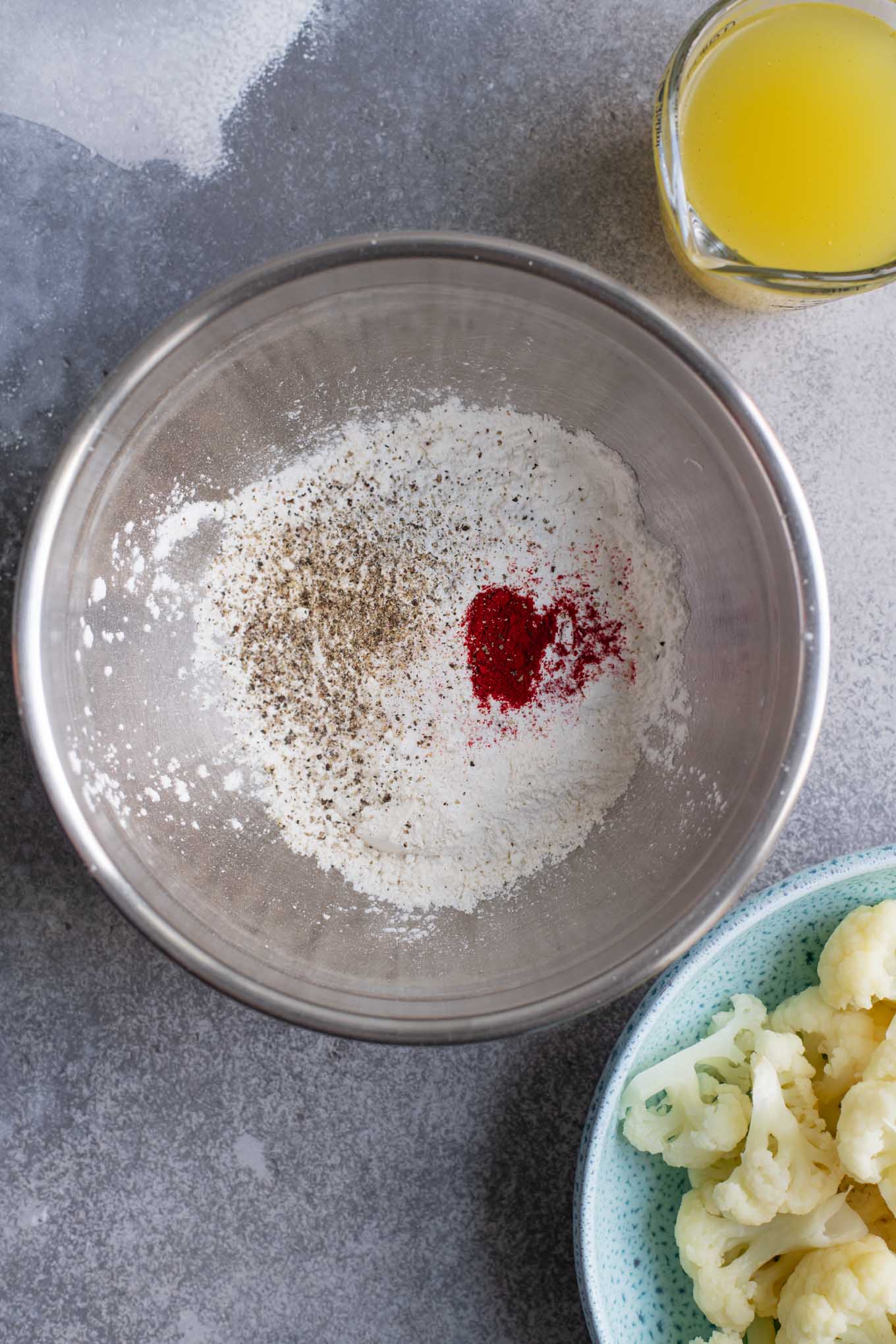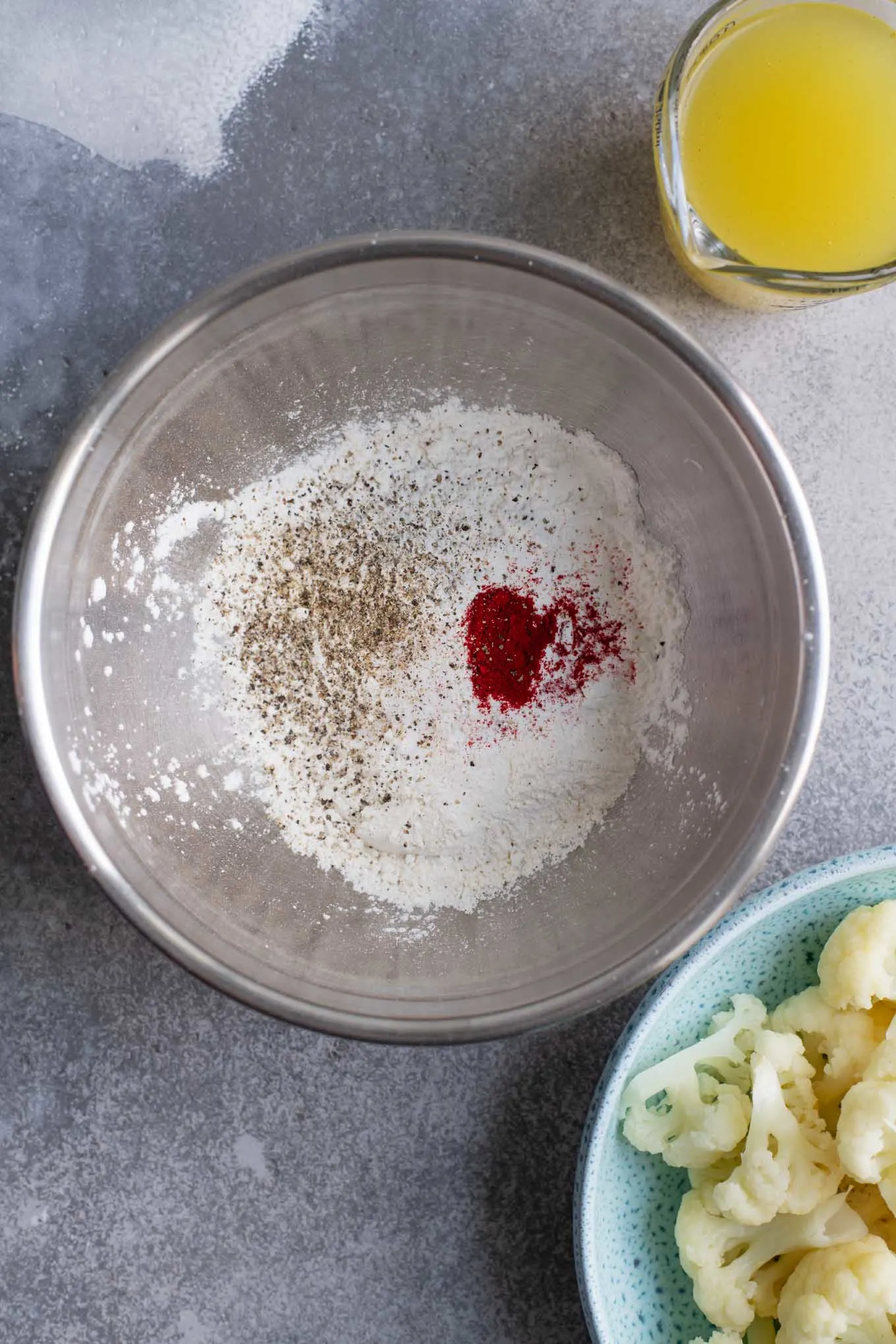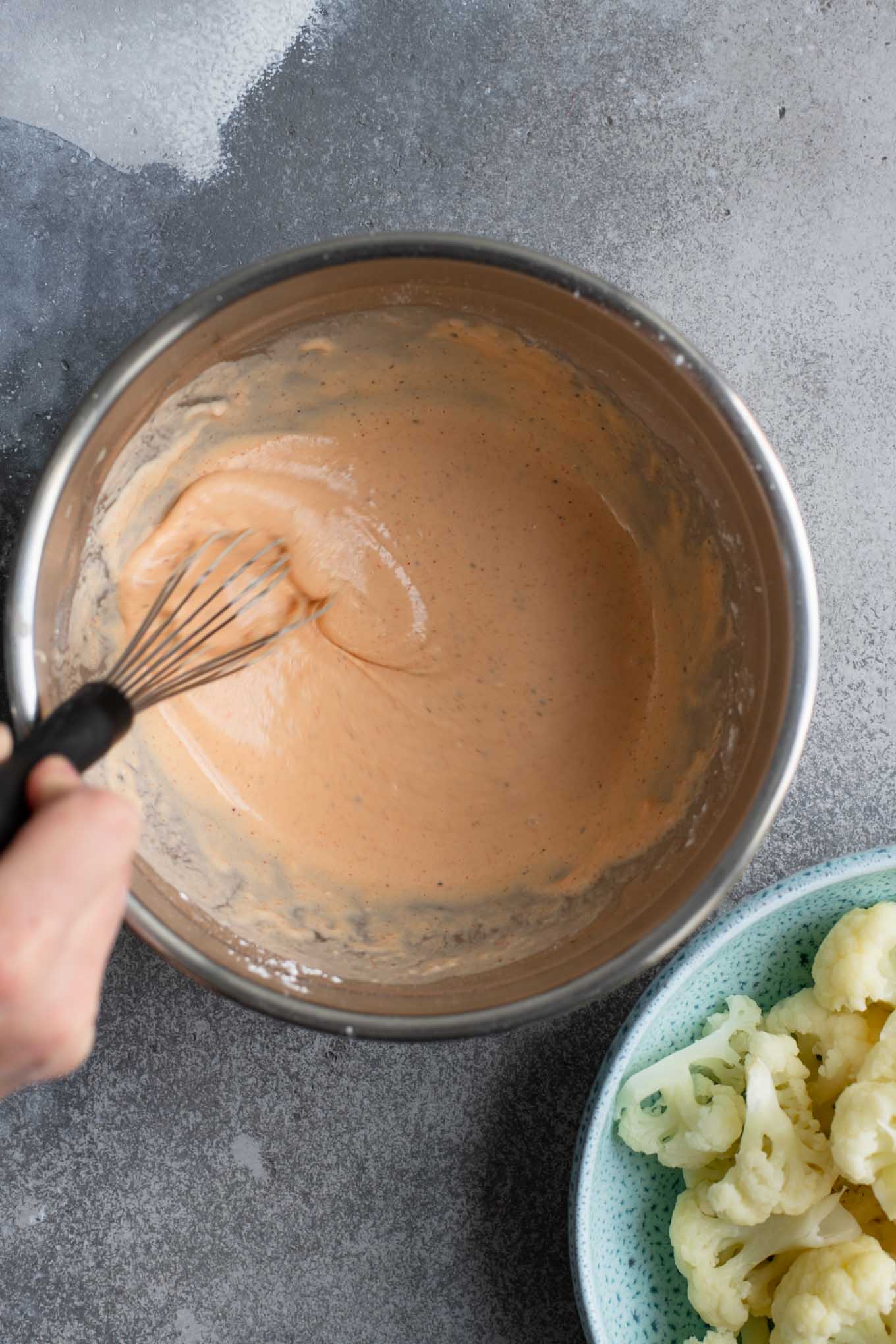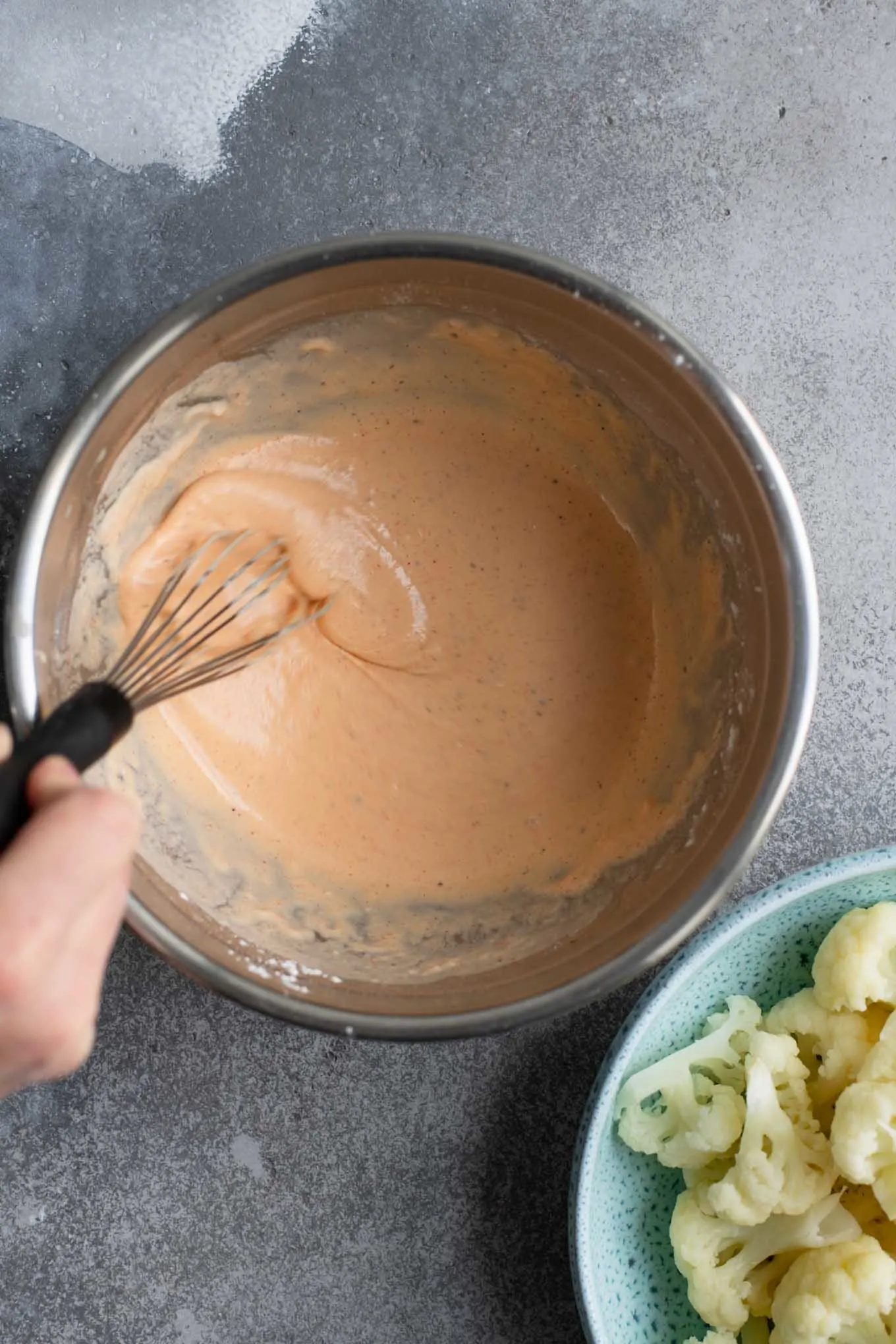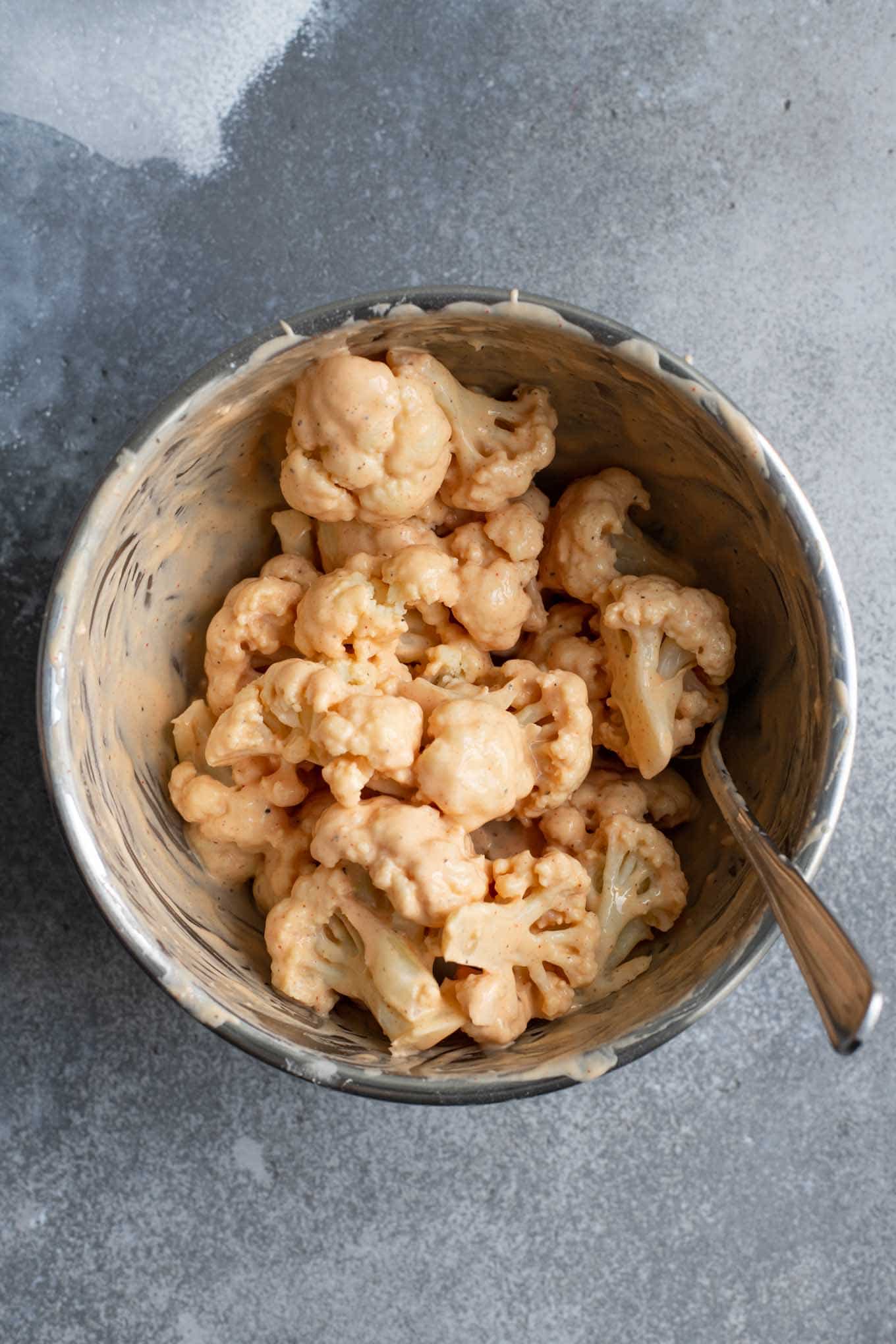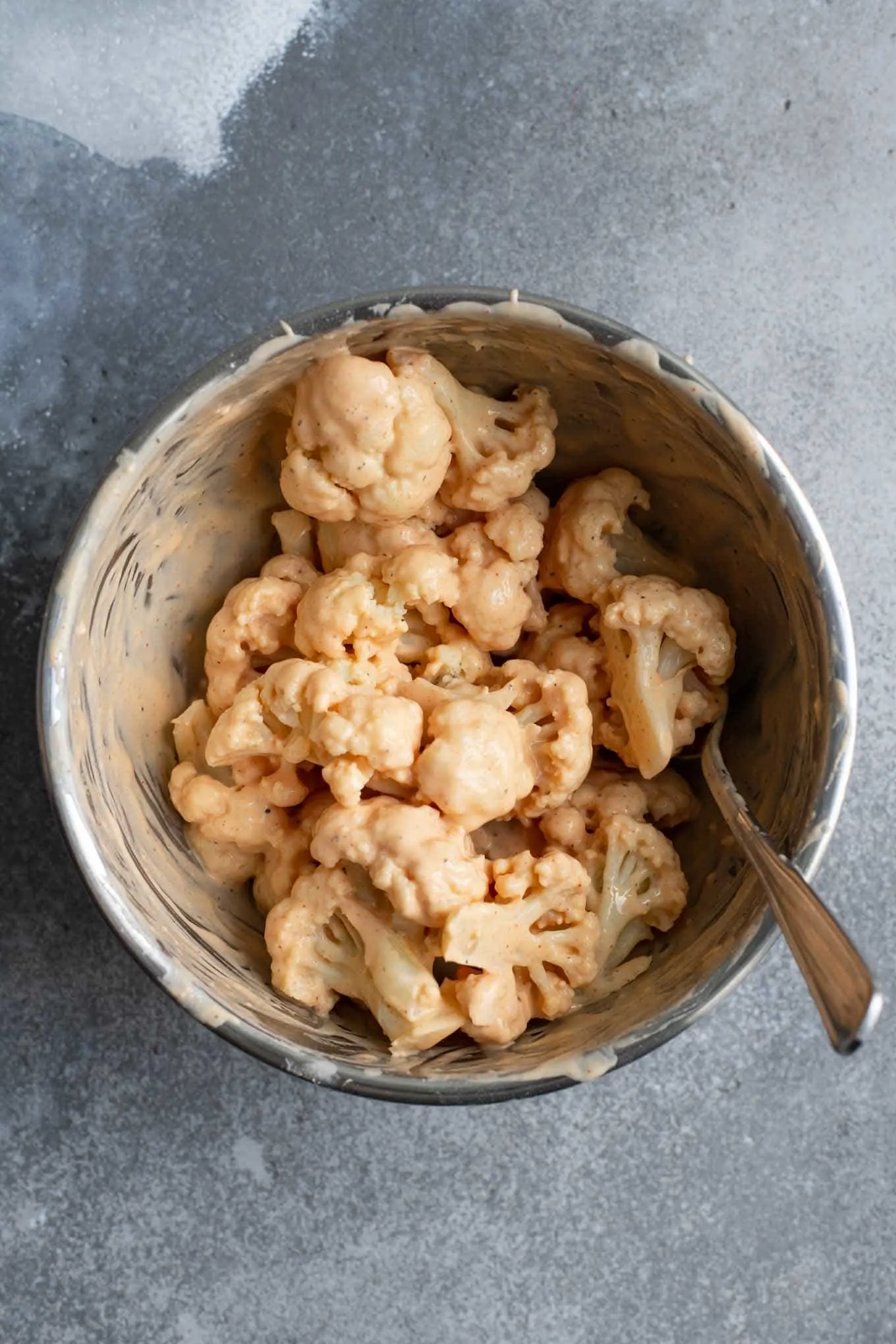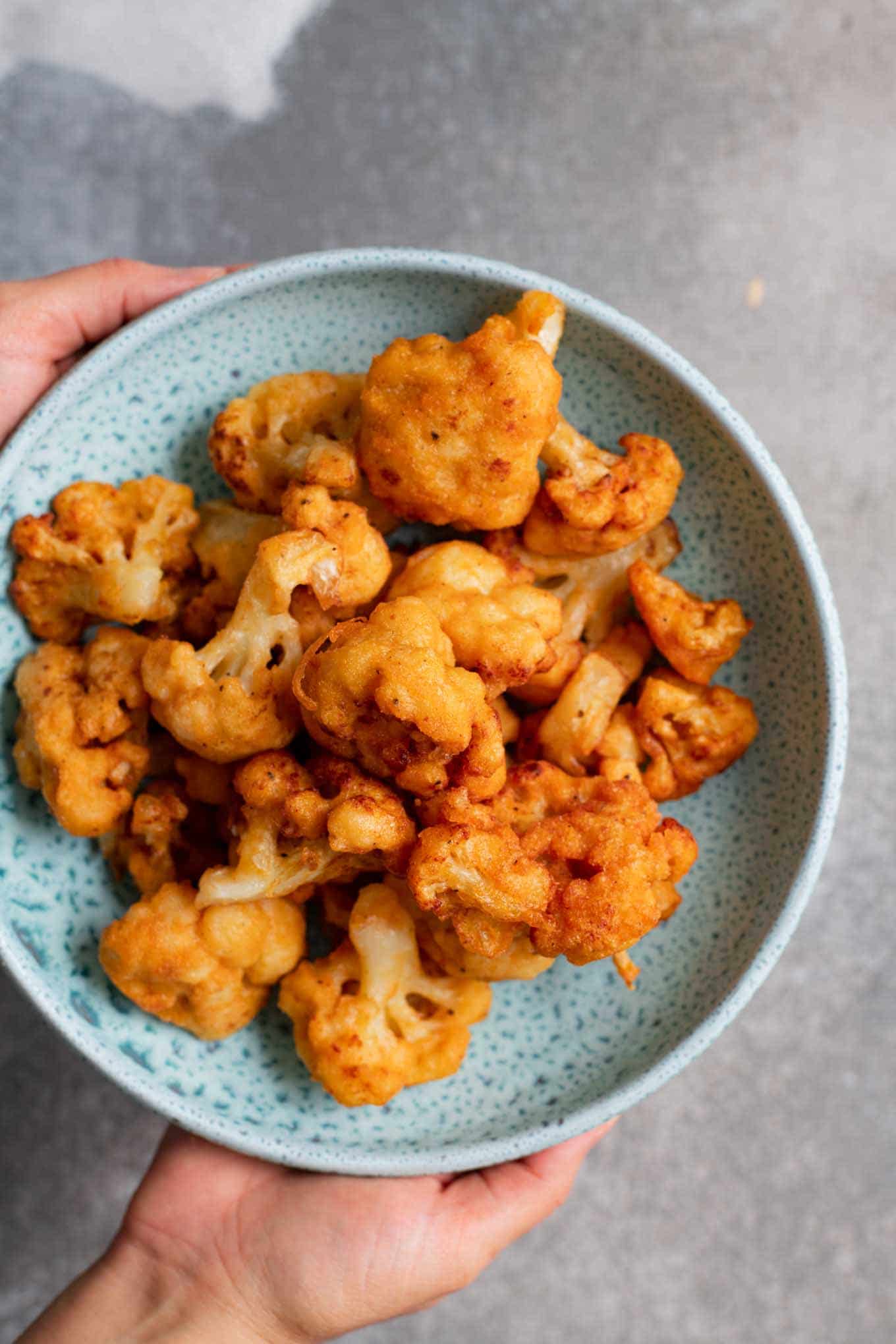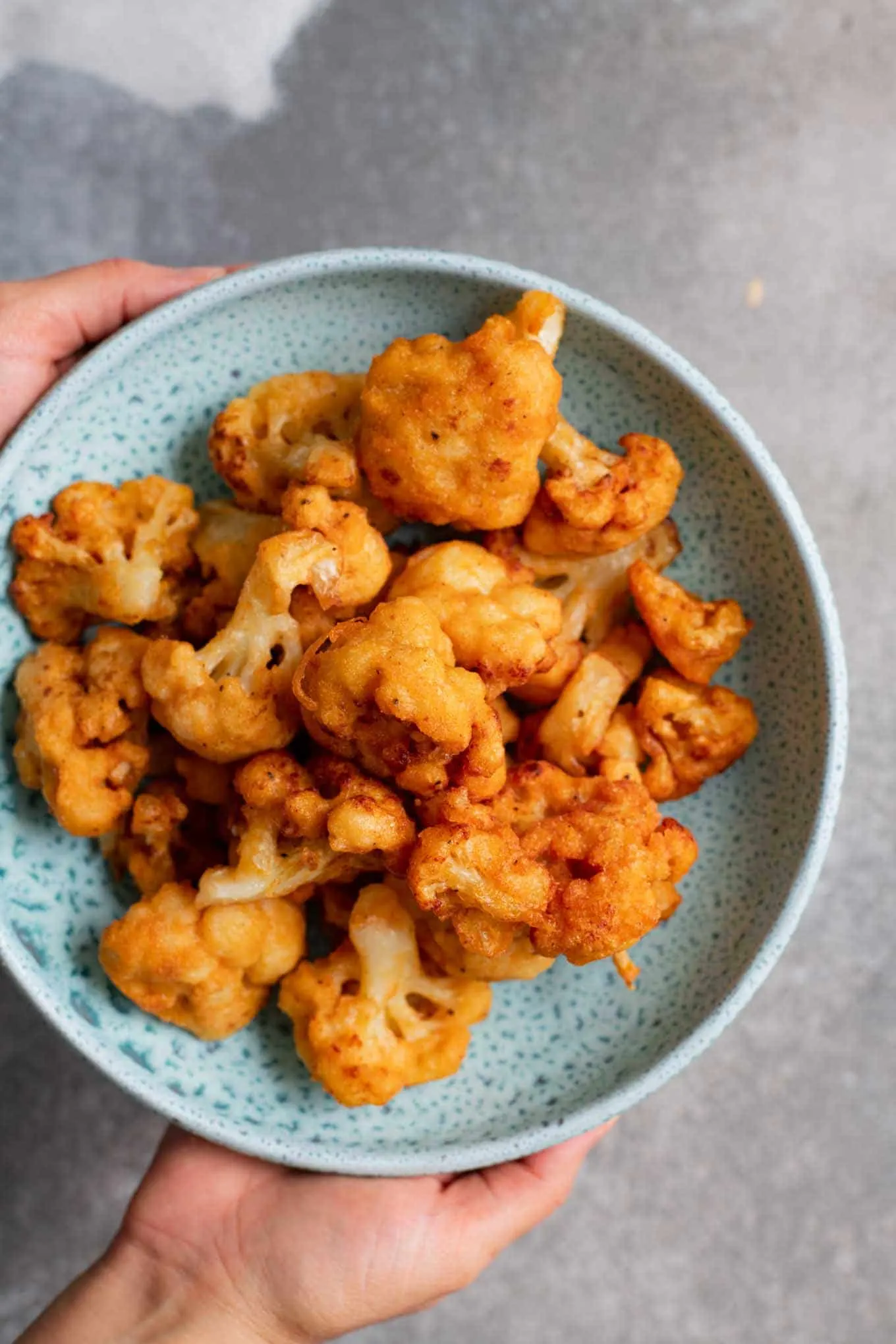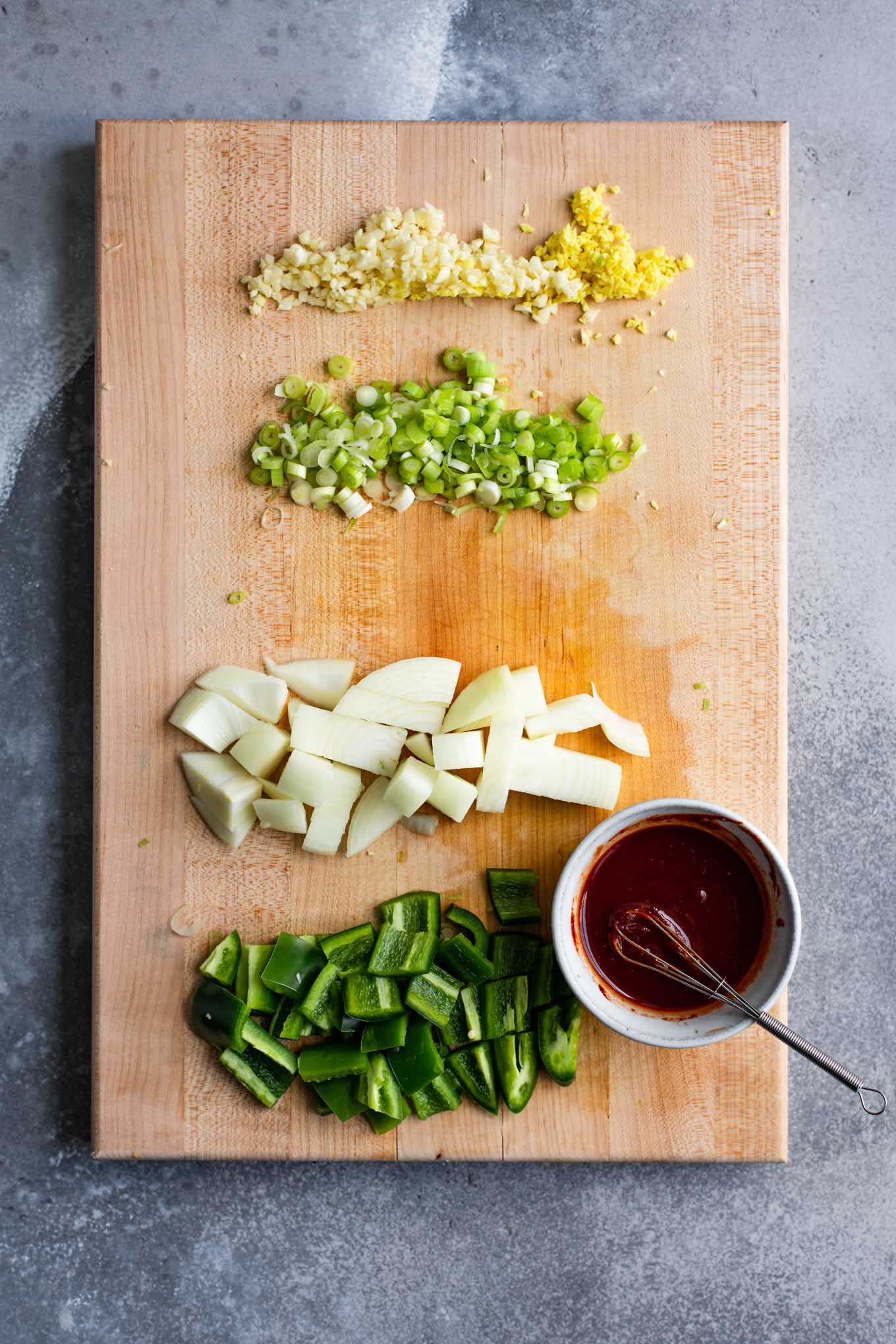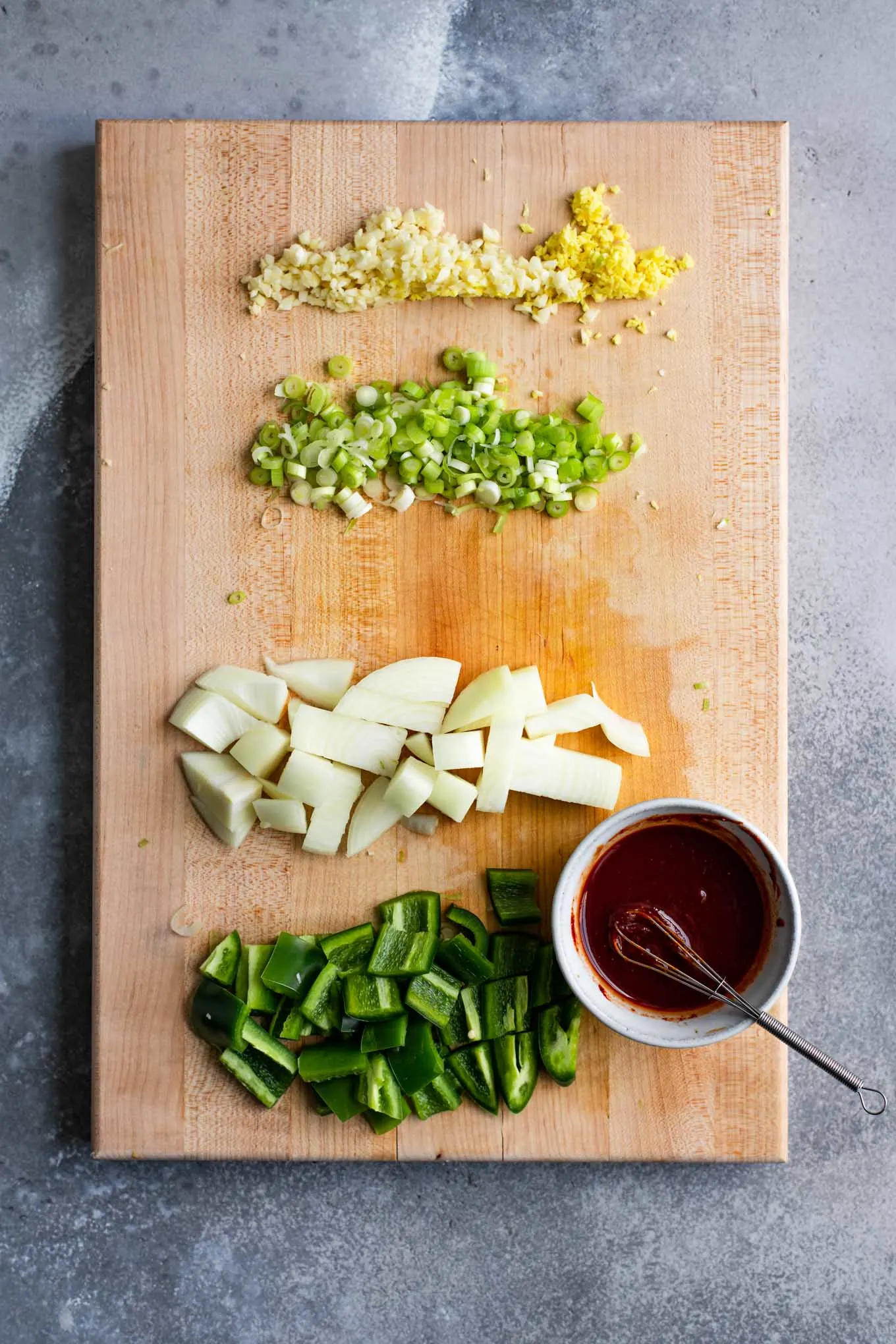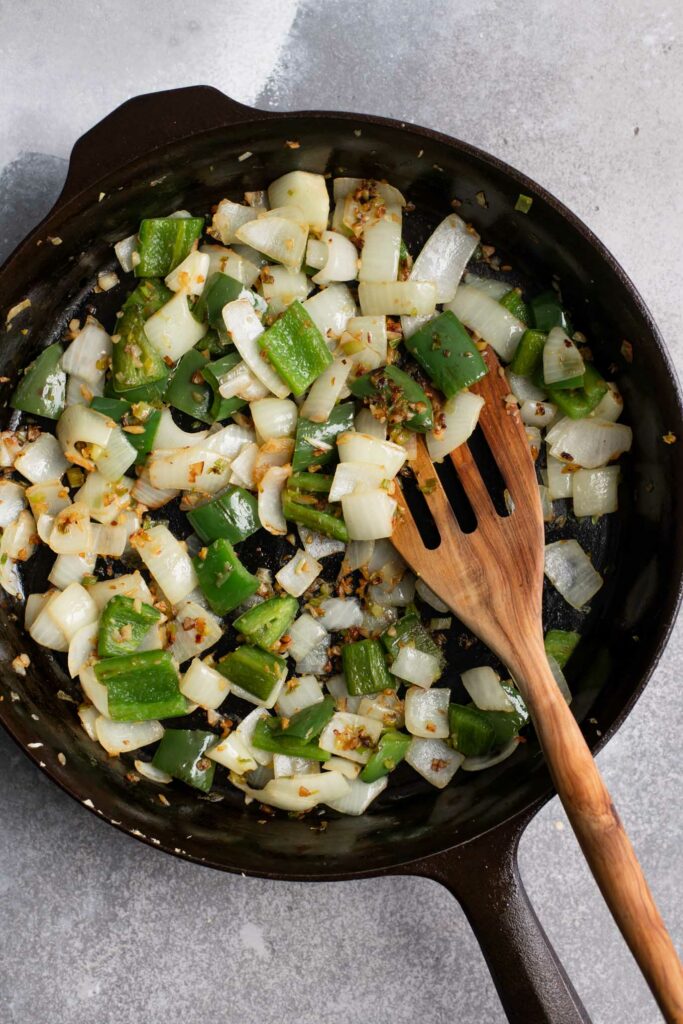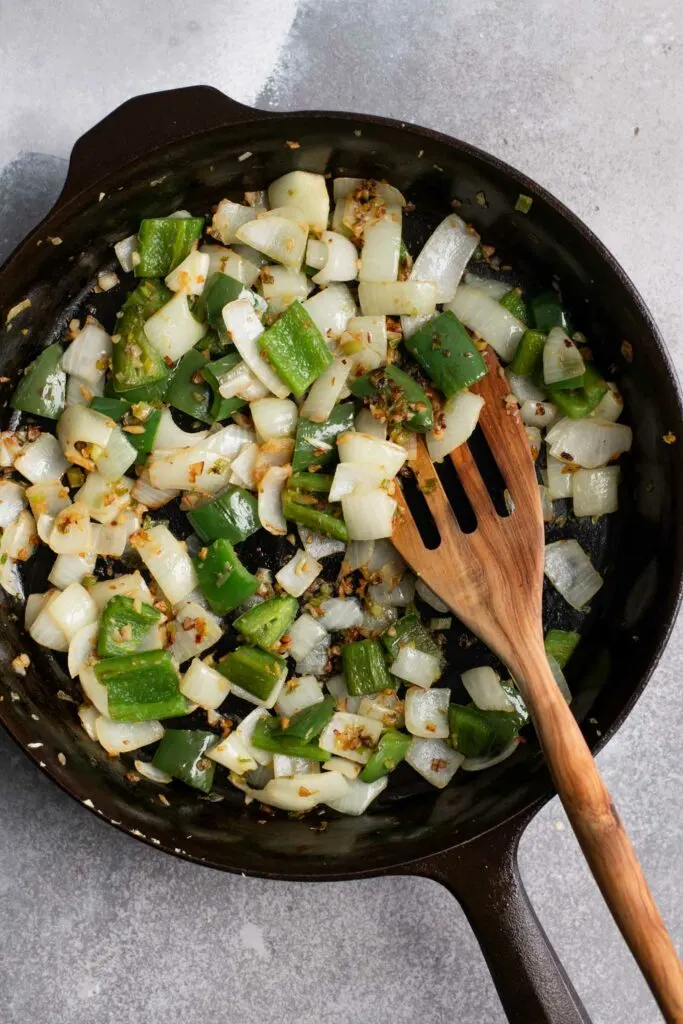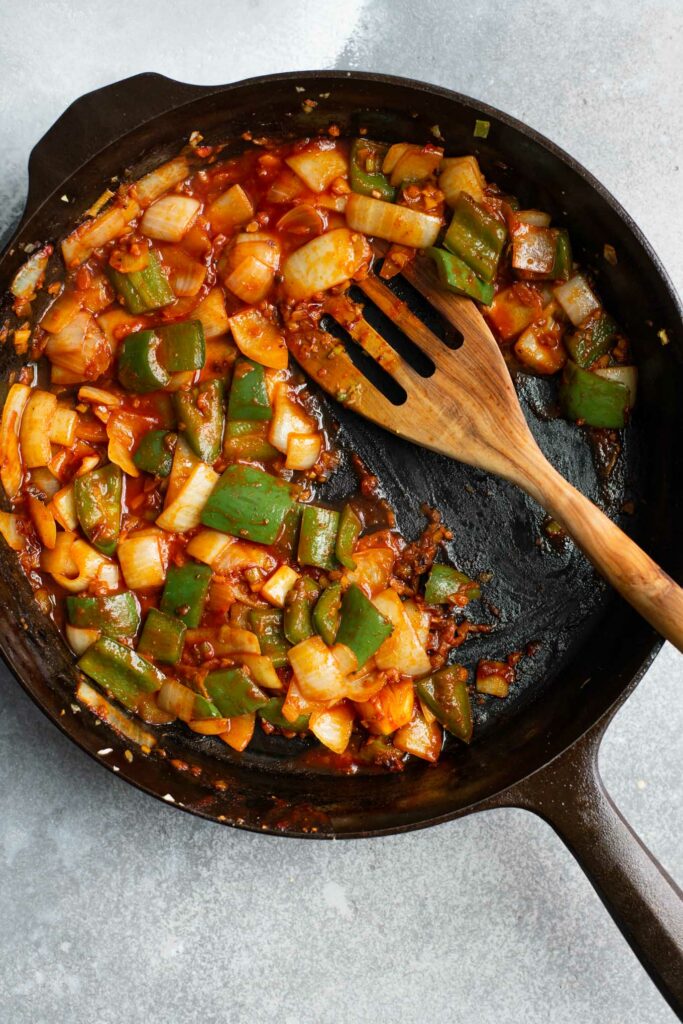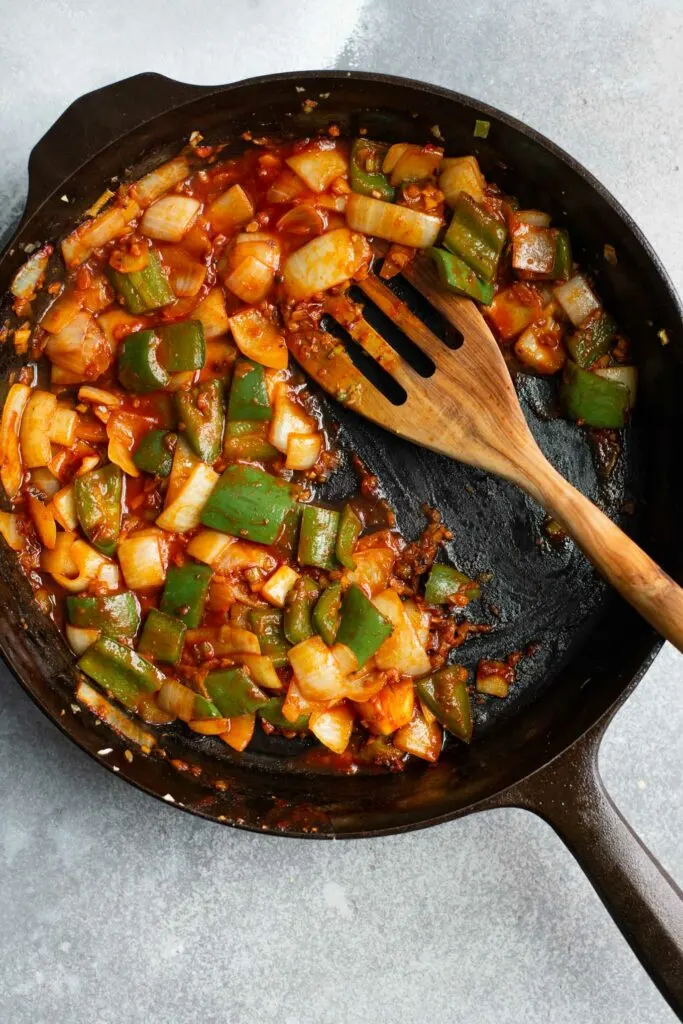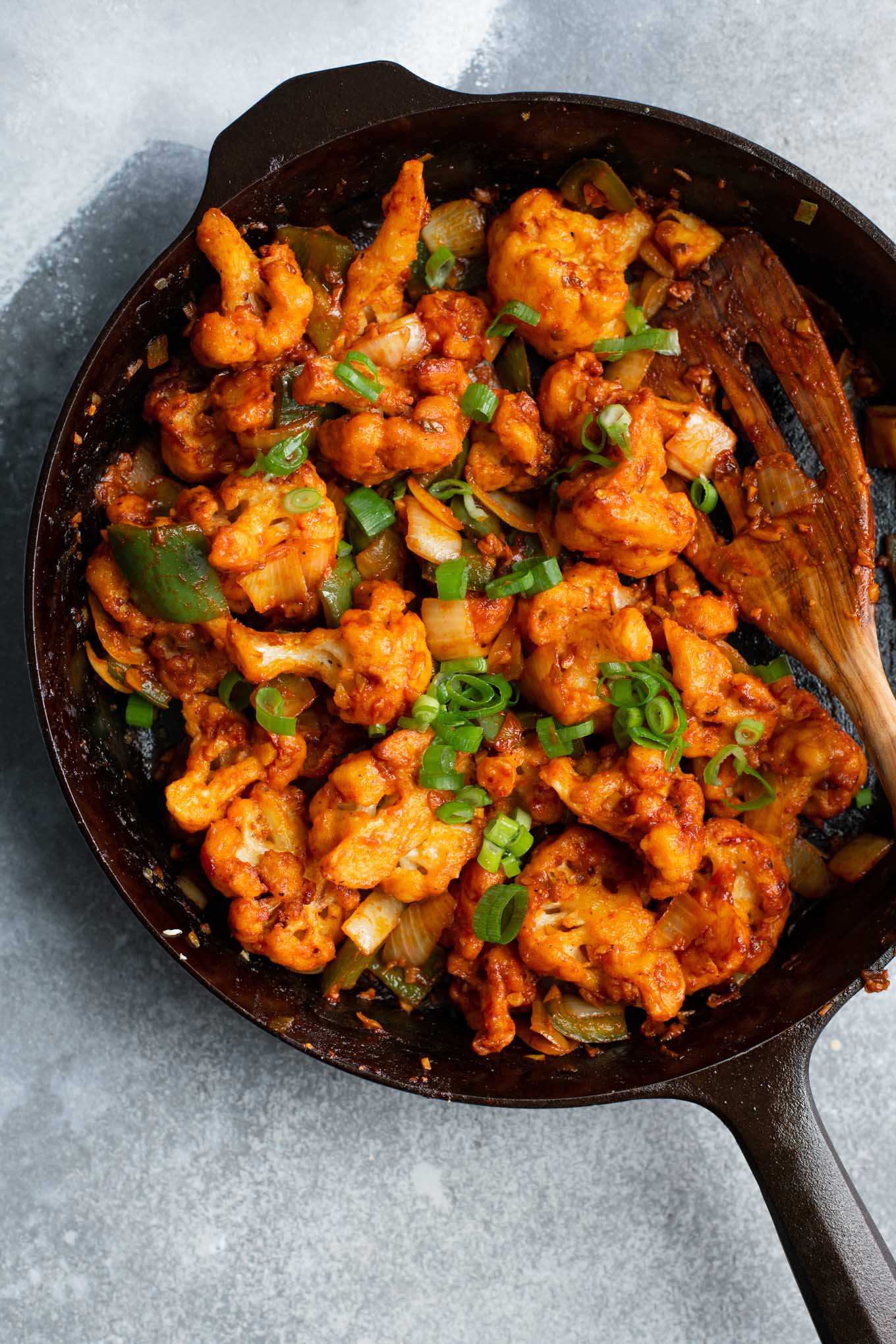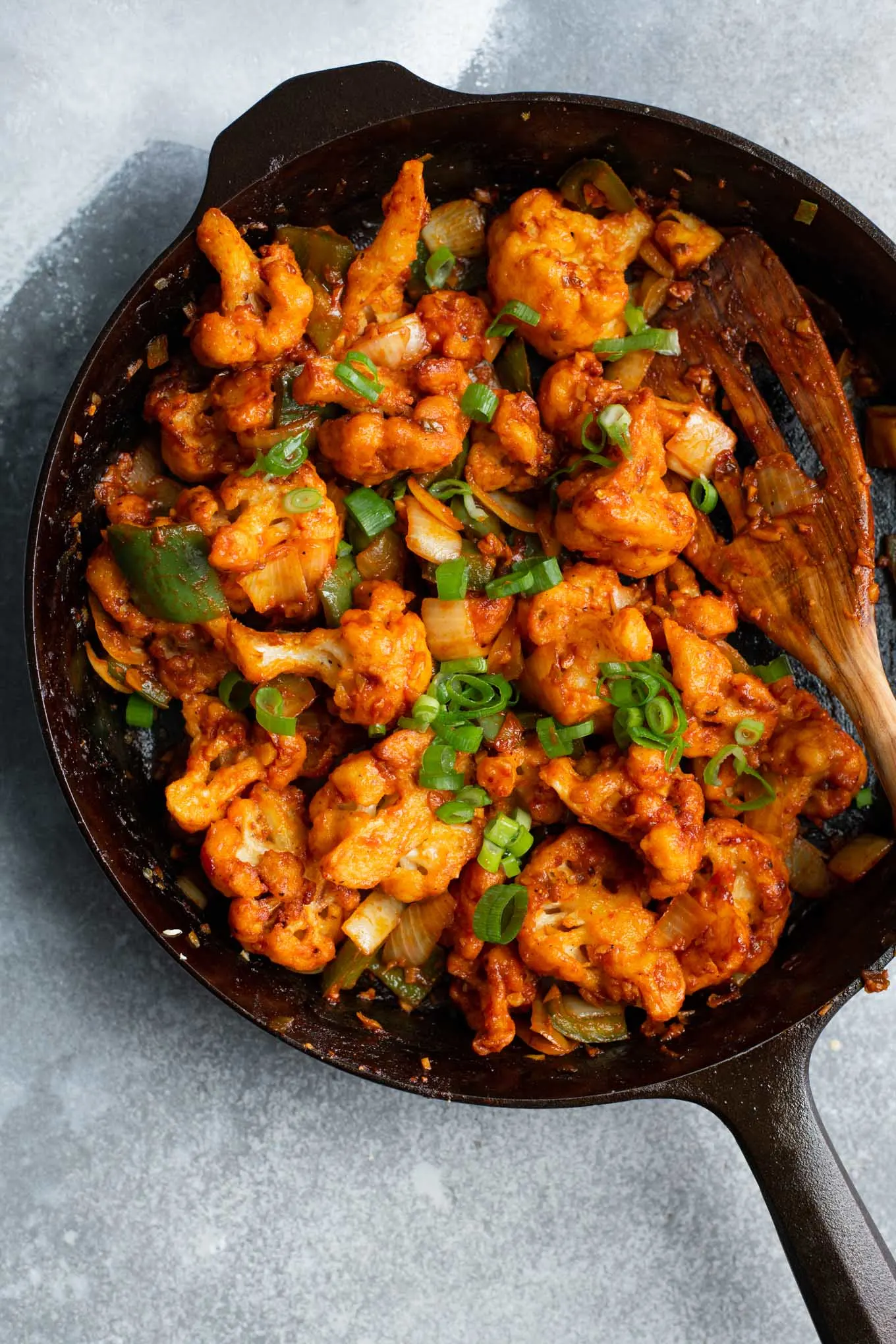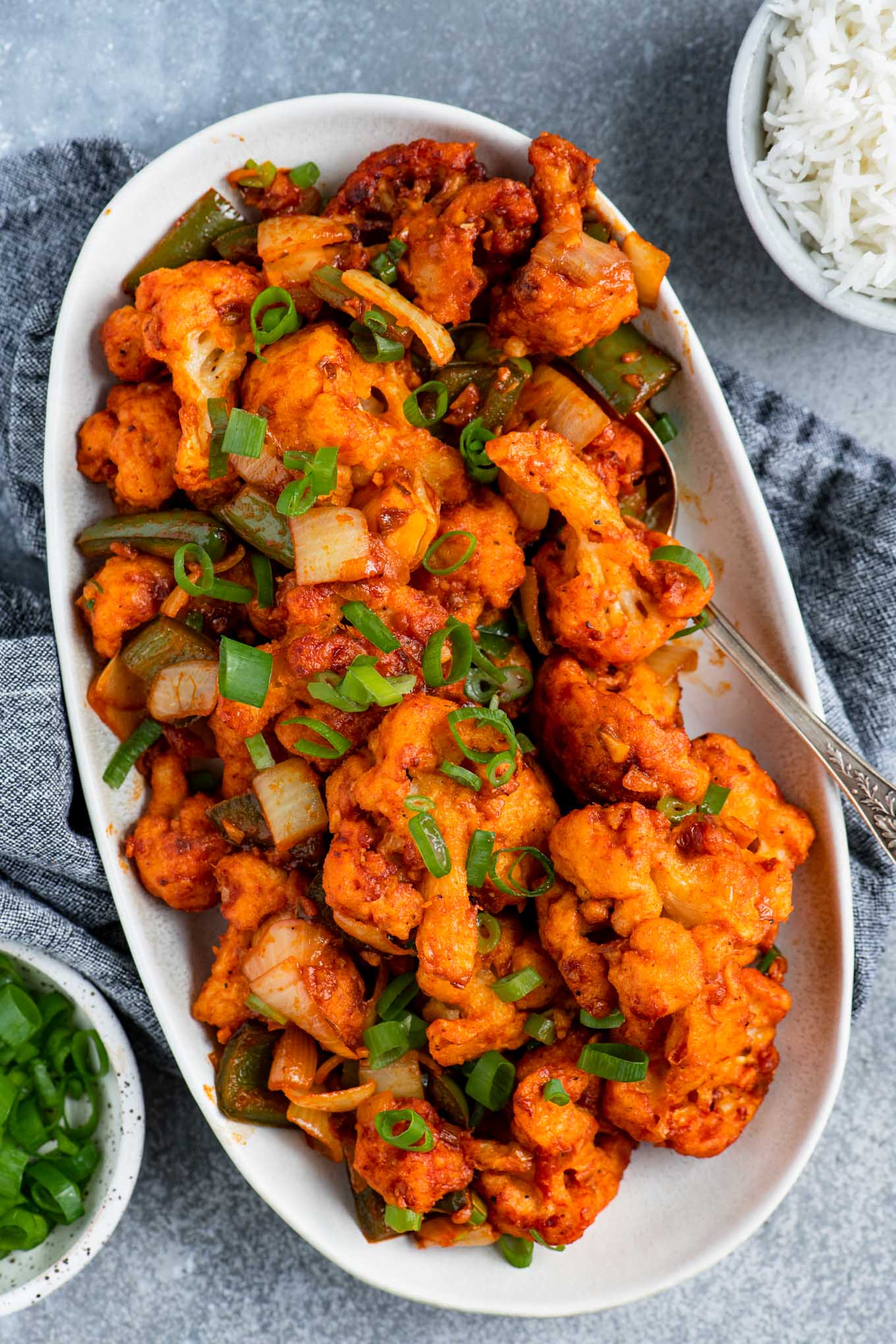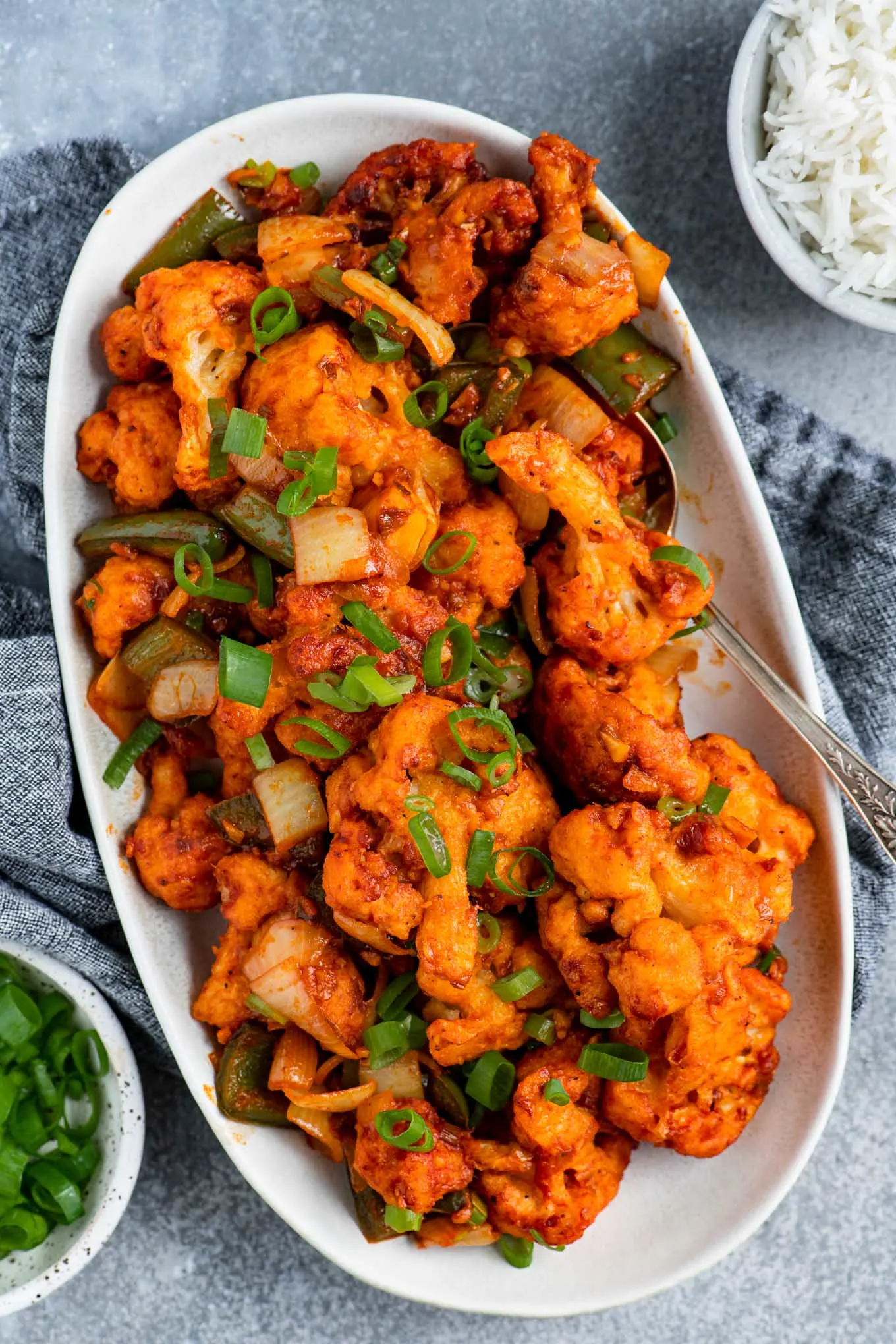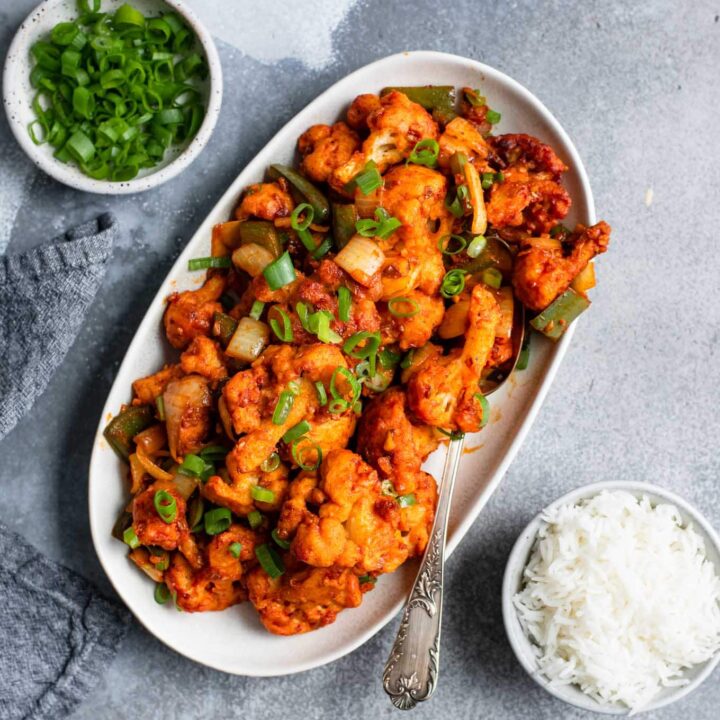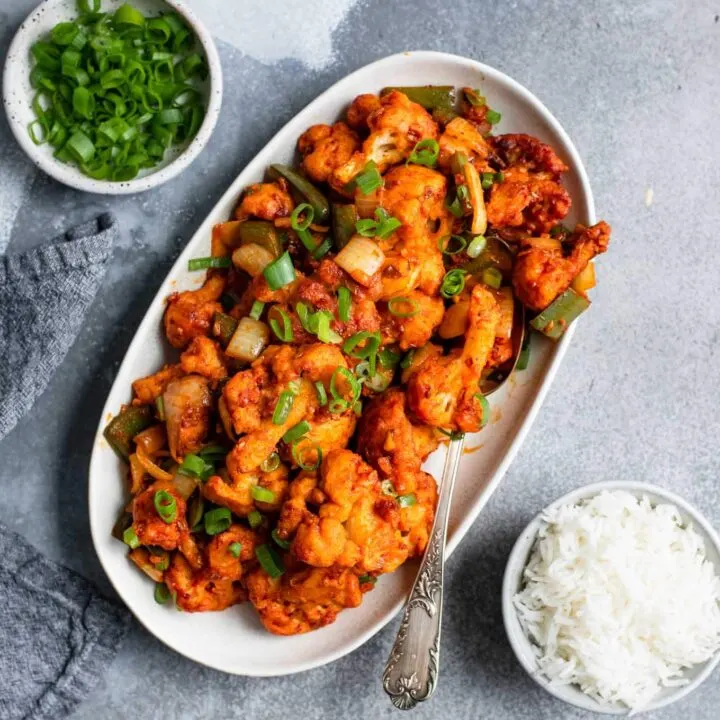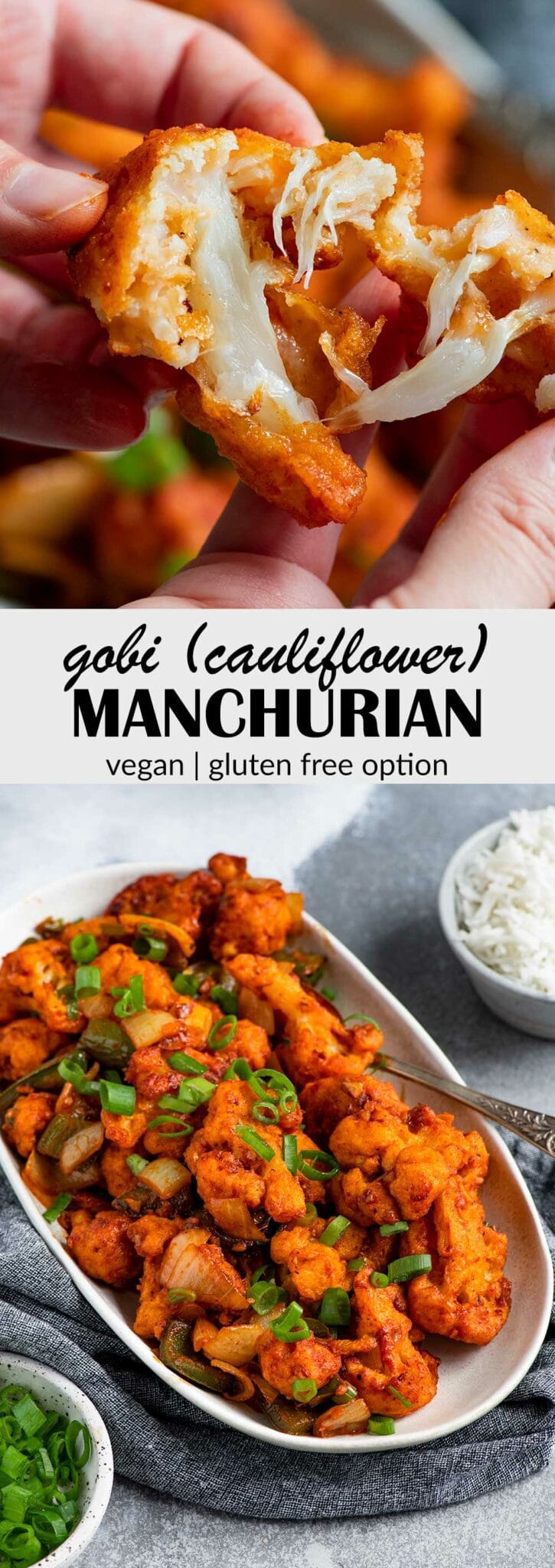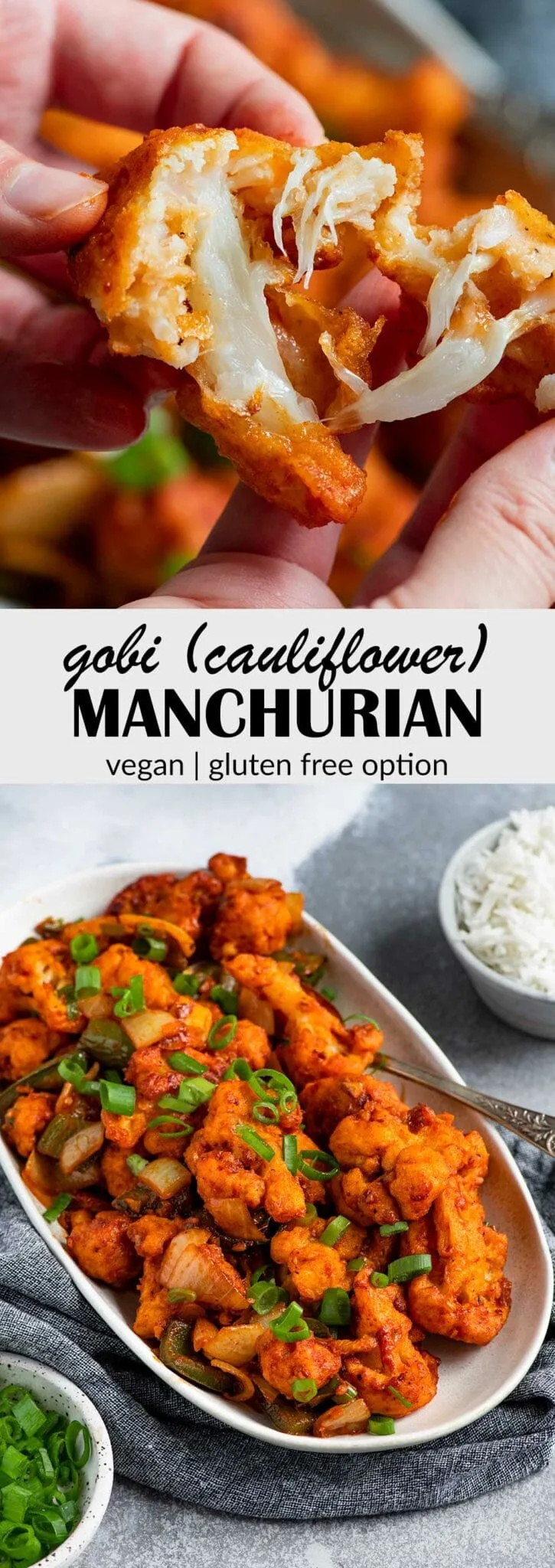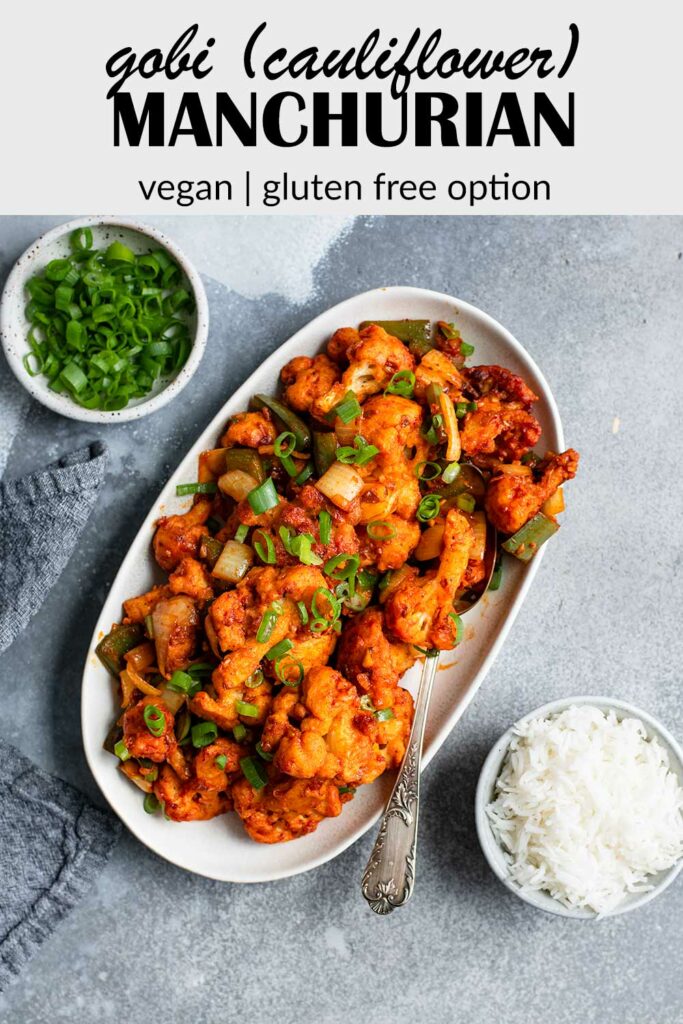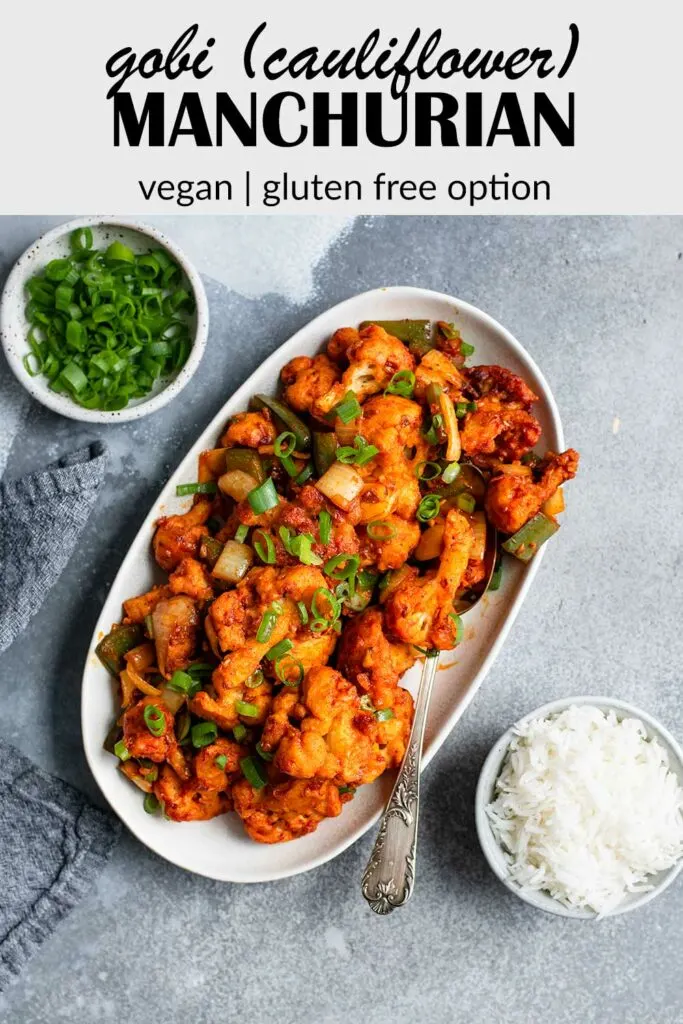Gobi Manchurian one of my favorite Indian-Chinese dishes, and always a favorite to order when out. It’s even better to make at home! Despite the fact that it’s traditionally fried, I wouldn’t call it crispy because the battered cauliflower does absorb the sauce. It turns into a lovely chewy texture with a tender yet toothsome cauliflower center. Indian Chinese food is a sub-cuisine of Indian cooking. It’s thought to have originated from Chinese immigrants in Kolkota (a city in West Bengal) over 200 years ago. It’s as much a part of Indian cuisine as the dosa. We see many instances of dishes created by immigrants where they have adapted their cuisine to palettes of their new homes. It’s why dishes like “tikka masala” exist in Anglo-Indian restaurants and “chop suey” exist in American Chinese restaurants. There’s a rich history of Indo-chinese cuisine in India, and Manchurian is one of the delicious results of that cultural fusion!
So what is gobi Manchurian?
First let’s translate the name. Gobi means cauliflower in Hindi. You can make various vegetables manchurian, or chicken/meat manchurian. Manchurian refers to China, specifically the Northeast region. Put it together and you have cauliflower in a Chinese-style sauce. Of course it’s not truly Chinese or Indian, but the Indian-Chinese fusion cuisine. Gobi Manchurian is likely the most iconic of the Manchurian dishes. Or maybe my vegetarian background is just showing, haha.
Making the Gobi:
The cauliflower (gobi) is cut into large florets for gobi Manchurian. You then steam it for just a couple of minutes. This softens it enough that it ends up fully cooked after frying. You don’t want mushy cauliflower, but instead a slightly chewy floret. Then batter the steamed cauliflower in a seasoned cornstarch (which is called cornflour in India and other British-English speaking places) and maida (all purpose) flour batter. It’s then fried until crispy and tossed in the Manchurian sauce. Aside: deep frying is a common cooking technique in India as traditionally people did not have ovens. Or at least not the Western style ovens you picture, they instead cooked in tandoor ovens (which I talk about in my homemade naan recipe).
How to bake the cauliflower:
Since I know you’ll ask, yes you can bake it. I’ll say you are doing the dish a disservice by doing so, but I did recipe test it and still enjoyed the results (note: all photos here are with the fried version of the cauliflower). If you are going to bake it, then you will want to add oil to the batter. This helps it crisp up and gives some of the richness expected in the dish. I’m sure it’s still less oil than deep frying. You could probably also use an air fryer, but make sure the batter isn’t too runny in this case so that it doesn’t fall off the cauliflower. I don’t have an air fryer so can’t give further instructions on this front. Other than adding some oil, the method is the same with the exception that if you want to steam it beforehand steam it for half the time. It’s easy to overcook cauliflower otherwise. And we don’t want mushy gobi. We’ll save that for aloo gobi! If you don’t mind a bit more chewy texture you can skip the steaming all together if you bake it.
The Manchurian Sauce:
Manchurian sauce is a sweet and sour sauce. I absolutely love it. Gobi Manchurian can be made dry, which is what I’ve done in this recipe, or wet. Wet gobi Manchurian just means that it’s served saucy in a thick gravy versus how in this preparation all the sauce and absorbed into the cauliflower itself. The sauce builds flavor with garlic, ginger, green onions (aka scallions), and chilies (optional, but delicious). Bell pepper and onion are added in a large dice for extra flavor, but also mostly just their delicious crunchy texture. It has soy sauce, chili sauce (e.g. sriracha or a Chinese chili sauce–check ingredients for fish sauce/anchovy to keep it vegan!), ketchup (often called tomato sauce in India), and rice vinegar. For spice we just add Kashmiri chili powder. Kashmiri chili is a flavorful but mild and vibrantly red colored pepper. You can add lot, give your dishes a beautiful red color, and not make it overly spicy. Back to the sauce, just add salt to taste and a little sugar to balance out the spicy and sour. Salt and sugar are flavor enhancers, and will bring out all of the layers of flavor of the dish. For the dry preparation you will still add a bit of water or (even better) vegetable broth to help the sauce thin out enough to coat the cauliflower.
Adjusting the spiciness:
You can make gobi Manchurian fiery hot or mild. For a spicy dish add chilies–jalapeño, serrano, Thai chilies, Indian chili peppers, you get the idea. You add them alongside the scallions to fry and soften. You can also swap bell pepper for big pieces of jalapeño, or add jalapeño to the bell pepper. I say jalapeño because it’s a crisp and fleshy pepper so will give some of that crunch that a bell pepper does. For medium heat use the chilies but remove some or all of the seeds. For mild, don’t add any chili peppers to the dish! You also adjust the spiciness by how much chili sauce (such as sriracha) you add. Add more hot sauce for a spicier dish, or use less to keep it milder if you need. If you use less chili sauce then increase the ketchup to compensate for the reduced liquid.
Making a wet gobi manchurian:
If you prefer your gobi to be smothered in the flavorful gravy (which I get, that extra sauce is very good with rice) then double the sauce ingredients. That means extra soy sauce, chili sauce, ketchup, vinegar, Kashmiri chili powder, salt, and sugar. Then make add 1 cup of water or vegetable broth to thin the sauce out, reserving a couple tablespoons of the water. Mix this water with a teaspoon or two of cornstarch then add the slurry into the rest of the liquid. This cornstarch slurried sauce to the pan and let it warm and thicken before adding the cauliflower. Voila, you have a wet gobi Manchurian. You’re welcome.
How to eat gobi Manchurian:
You can eat it as is, nothing else is needed! But I’m desi so adding carbs feels like a must. I love it with basmati rice, naan, or other roti! No matter what, I hope you enjoy!! If you make this gobi Manchurian, leave a comment below and rate the recipe on the recipe card. And please share your photos with me on Instagram, tag @thecuriouschickpea and #thecuriouschickpea. I love seeing your recreations!
To make a wet gobi manchurian double to liquid sauce igredients + salt, sugar, and chili powder and add 1 cup of water or vegetable broth. Make a cornstarch slurry with 1-2 teaspoons of cornstarch and 1 tablespoon of water and add it to the sauce. Let the sauce cook until thickened before adding the cauliflower.
Rani Kashmiri Chilli Powder (Deggi Mirch, Low Heat) Ground Indian Spice 3oz (85g) PET Jar ~ All Natural, Salt-Free | Vegan | No Colors | Gluten Friendly Ingredients | NON-GMO | Indian Origin Marukan Rice Vinegar, 24 Ounce (Pack of 2)
